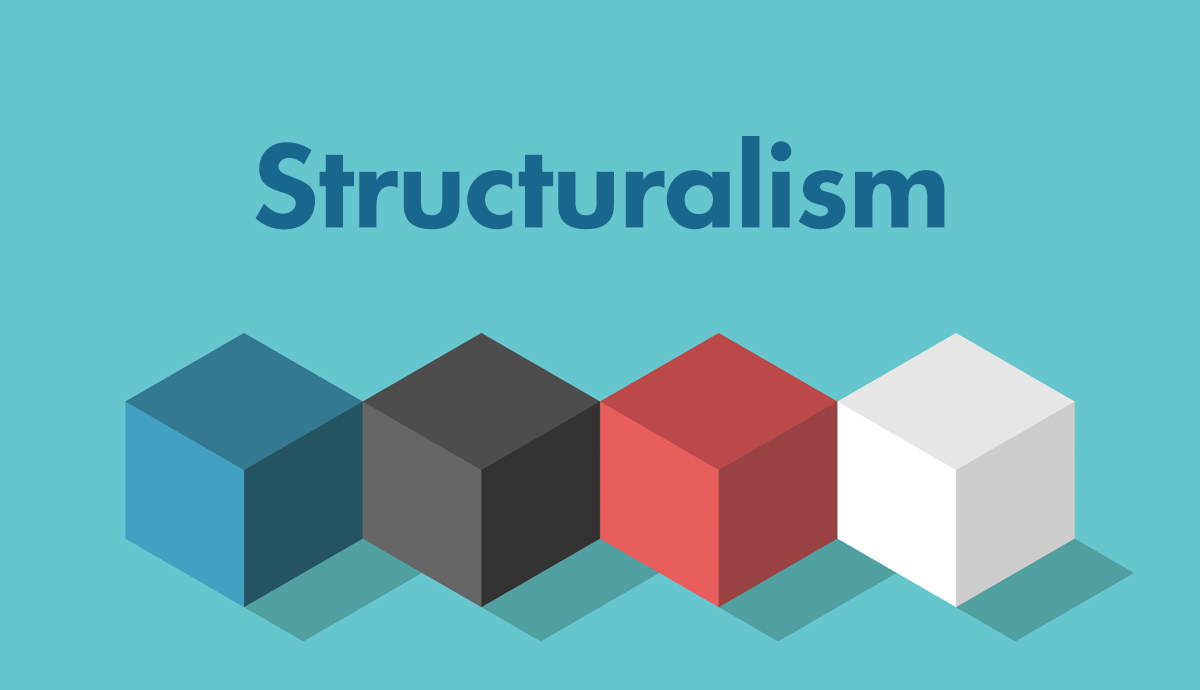
This article explores the ideas of Rene Girard concerning violence and sacrifice. According to Girard, the impulse for violence is directed towards a surrogate victim in order to avoid further societal violence and collapse. Sacrifice is pure violence committed to prevent impure violence.
Girard traces this function in various myths, including those found in the bible. He explores the dual and special character which the scapegoat has to occupy in order to attract violence. This article also discusses how Girard’s notion of sacrifice can shed light on current and historic political developments.
René Girard on Violence, Sacrifice, and the Sacred

The notion of sacrifice remains somewhat mysterious. Whilst it is easy to brush it off as a superstitious behavior of primitive people, the mechanism which made it persistent across cultures has yet to be explained. A traditional interpretation by Hubert and Mauss points out a certain ambivalence in sacrifice. There’s a criminality involved in killing a sacred person, but the person is sacred only in so far as they will be sacrificed.
This circular reasoning is unappealing to René Girard. Particularly, the key to sacrifice for Girard stands in the notion of violence. Girard understands violence to be the fury that is always channeled towards a surrogate victim, something that is close at hand and not directed towards what actually causes it. Violence, for Girard, is also an immutable drive instilled in our human nature. In order to conceal its destructive power, the sacrifice serves to direct the violence towards a scapegoat, and thus protects the rest of the society from violence turning inwards.
Girard gives examples of this behavior not only of humans but also in the animal kingdom. For example, certain fish species turn their violence towards members of their family due to the lack of rivalry with other males. Girard doesn’t accept that the sacrificial economy is meaningless just because sacrifice might be done for the sake of a deity that does not exists. In fact, what gives meaning to sacrifice, according to Girard, is precisely the lack of such a deity in actual reality, the lack of interference of a God to direct the sacrificial process one way or another.
Sacrifice in the Bible

René Girard starts his investigation on violence with the biblical story of Cain and Abel. Cain and Abel are brothers, descendants of Adam and Eve. Cain is a farmer, and Abel is a shepherd. While both sacrifice their products for the glory of God, God prefers Abel’s sacrifice of lamb to Cain’s wheat. Cain, enraged, kills his brother and is banished by God from the settled country, punished to be a wanderer.
According to Girard’s analysis, this explosion of violence occurs because Cain did not have the outlet for violence in living animals as Abel did. In the eyes of God, Cain is a killer, and Abel is not. What Cain is actually jealous of isn’t simply God’s preference for Abel’s sacrifice, but the outlet for channeling violence that Abel had but which he was lacking.
Rivalry between brothers is common in myth. In the bible, we also have the rivalry between Jacob and Esau. In this story, Jacob deceives his blind father, Isaac, by impersonating his brother Esau. Jacob wants to receive a blessing from his father, which he knows he would not get otherwise. Jacob’s skin is smooth while Esau is hairy, so Jacob covers himself with goat pelts to deceive their father into thinking he is actually Esau. Isaac touches his son and notices that his skin is hairy, which convinces him that he is talking to Esau. He then gives Jacob a blessing, which clearly wasn’t intended for him. Girard explains the act of deception through the sacrifice in the following way:
“…the son must seek refuge, literally, in the skins of the sacrificed animals. The animals thus interpose themselves between father and son. They serve as a sort of insulation, preventing the direct contact that could lead only to violence.”
By preventing direct contact, the sacrifice leads to a blessing instead of the curse of violence.
The Scapegoat

The person or animal that is sacrificed absorbs all the societal tensions and contradictions, which without an outlet, threaten to destroy the fabric of society as a whole. The sacrifice protects the whole community from its own violence. The sacrifice gathers, at least temporarily, all the societal turmoil, all the scattered elements of discontent, and realizes them into a surrogate target – the scapegoat. The scapegoat’s death marks the temporary discharge of this imminent unrest.
“There is a common denominator that determines the efficacy of all sacrifices and that becomes increasingly apparent as the institution grows in vigor. This common denominator is internal violence—all the dissensions, rivalries, jealousies, and quarrels within the community that the sacrifices are designed to suppress.“
The sacrifice thus seeks to reinforce the social order, to restore the harmony of existing structures that might have otherwise crumbled underneath the weight of the violence that they generate. Whether the sacrifice is a human or animal, as long as it performs this function of directing excessive violence towards the surrogate target, it doesn’t really matter. This isn’t to say that Girard doesn’t see a difference between societies that sacrifice animals and those that sacrifice humans, but that focusing on the gruesomeness of the act or victim will lead us to miss the general structure and function of the act itself.
What the scapegoat needs to possess is a certain relation to the rest of society, a relation which assures that their death won’t be seen as an act of vengeance and, as such, won’t provoke further violence outside the parameters of the sacrificial ritual. The scapegoat can be exposed to violence without fear that violence will be returned to the hand that deals it. The scapegoat soaks up the violent cracks which threaten to explode and destabilize the social order. Violence is like a river that occasionally will expand outside its bed and risk flooding the whole town. This expansion is directed towards the scapegoat to save the rest of the community from itself.
Nazism and the Jew as the Scapegoat

Gerard is very careful in stating that sacrifice is characterized by a ritual, the parameters of which give the violence its purity. However, the same logic of sacrifice can be recognized in the rhetoric of fascism, with the boundaries of the ritual blurred. The Nazis used the Jews as the ritual scapegoat towards which all the economic and systemic anxieties were channeled. The Nazis also aimed to “restore” the harmony of their social order via the expulsion of what they considered to be infectious.
The Jew as a scapegoat had a dual nature: they were simultaneously weak enough for their attack not to cause vengeance – weak in the sense that they were “perverted” and not strong like the Aryan – but yet they were also seen also strong, an economic elite which threatened to control everything. There’s no way out once the scapegoat is identified ideologically. A Jew who is mean to his German neighbor will be seen as ungrateful, uncooperative, arrogant. A Jew who is nice to his neighbor will be seen as a Jew who is trying to conceal their true nature in order to blend in with the Germans. The scapegoat can’t do anything to escape its fate in the eyes of the authority which has deemed them to be a scapegoat.
Applying René Girard’s Ideas to Current Fascist and Conspiratorial Rhetoric

When we hear calls for ethno-states, ethnic cleansing, and anti-immigration rhetoric, the motivations follow a similar sacrificial dynamic. This is quite obvious in conspiracy theories. Most conspiracy theorists allude to a “They” (“They” nearly always being Jews) that are degrading Western society. “They” sit at the top of the world, and everything that happens is happening according to their plan. Immigrants, LGBT+ people, and all other progressive forces are seen as being carefully constructed and deployed by “Them” in order to destroy society. It is not difficult to see that “They” are simply a surrogate target for certain groups’ repressed violent tendencies.
The conspiracies often go much deeper, with conspirators sometimes believing that they’re fighting Satan himself in a holy war. Take the example of George Soros, a billionaire who often donates to progressive causes. Conspiracies surrounding him have such a strong rhetorical power that many post-communist countries in western Europe have politicians running on anti-Soros platforms, as was the case with Viktor Orban in Hungary. Recently, the proto-fascist PM of Italy, Giorgia Meloni, has stated that she will pass an “anti-Soros” law to prevent Soros from undermining the sovereignty of the countries in which he operates.

At a basic level, the problem is obvious. Billionaires shouldn’t have this much power to influence public opinion, regardless of whether the opinion is progressive or reactionary. Soros doesn’t undermine the sovereignty of Italy, but rather, he contributes to a shift in public opinion that is unacceptable to fascists, reactionaries, and conservatives. Therefore, progressive causes are scapegoated.
Central Europe and Italy have been through devastating economic turmoil in recent decades. Many European countries have been thrown from the rigid relations of communism straight into the fast-paced, global neoliberal order, an order which speaks only in terms of profit and loss, deaf to moral values. In these conditions of structural anxiety, economic exploitation, and lack of durable projects, progressive forces become the target that sustains the excessive violence that develops within societies. What a genuine political project should seek is the capacity to absorb systemic violence, to direct its violence towards the systems that truly give rise to it instead of surrogate victims.










